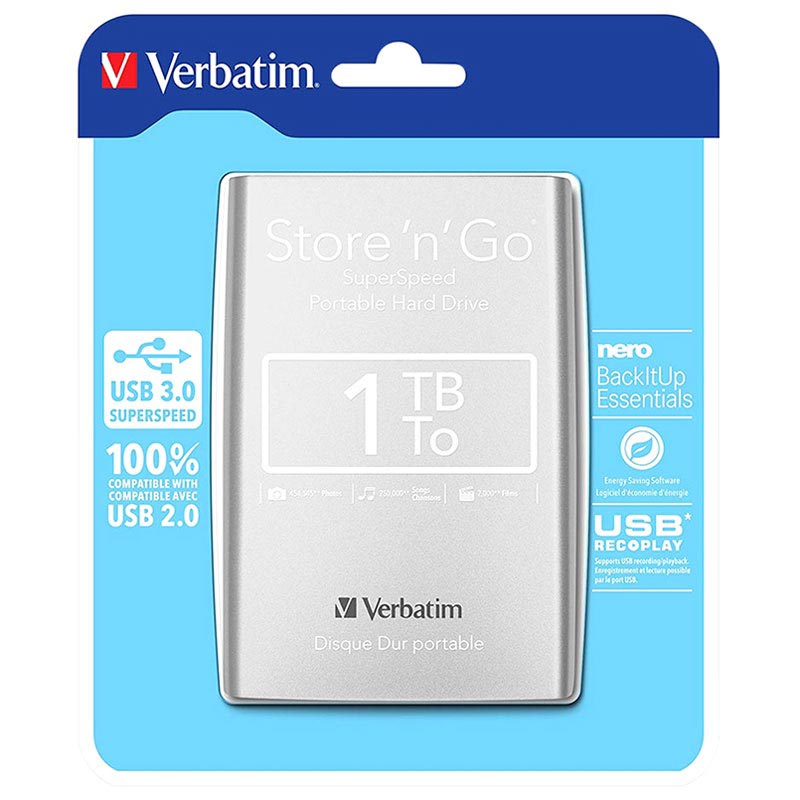

We didn't have a laptop with an integrated USB 3.0 port available for the review. However, the Mac Mini (Windows Vista / Mac OS X) and HP 5101 (Linux Mint) supplied the hard disk with energy via USB 2.0 problem-free and don't seem to be too strict about the USB 2.0 specification. Fujitsu (Toshiba) quotes energy consumption when booting for this hard disk of 5 Watt.

This makes us assume that, at least in the start-up phase, more energy is required than the 900mA designated to USB 3.0. At any rate, only with an additional USB 2.0 energy supply of the USB 3.0 ExpressCard did it start operating. On some USB 2.0 ports (HP 6540b) and the USB 3.0 ports of different ExpressCards (Typhoon and Raidsonic) the hard disk remained inactive after the status LED briefly illuminated.

In the review this didn't turn out to be completely without problems, as the drive didn't always start working. The energy supply should, in the case of the Verbatim Store'n'go, be completely provided by the USB 3.0 port. The access times are likewise on the same level, at 18.4 ms. As always, Mac users have to wait for fast interfaces and make do with FireWire 400/800 and USB 2.0 for now. USB 3.0 is, like eSATA, still unusable on MacBooks. On Mac OS X Leopard we reached a rarely deviating 31.9 MB/s. Thus it offers reasonable performance to computers without USB 3.0. To this end see our extensive HDD benchmark list.Ĭonnected to a USB 2.0 port, the Store'n'go reached a relatively good rate of 32.7 MB/s. What turned out to be rather average are, however, the access times, at 18.2 ms. These transfer rates are completely achieved by USB 3.0 and the rates are only limited by the performance capacity of the hard disk itself. With transfer rates at a maximum of 90.2 MB/s and 70.2 MB/s on average, it's in the top bracket of its device class. The data medium from Fujitsu is convincing for its very good performance for a 5400 RPM hard disk. In delivery condition the hard disk is formatted to FAT32, thus it can be used on both Mac OS X and Windows out of the box. As for the drive deployed, in our device there's a Fujitsu MJA2500BH G2 (now Toshiba) with a capacity of 500 GB.


 0 kommentar(er)
0 kommentar(er)
